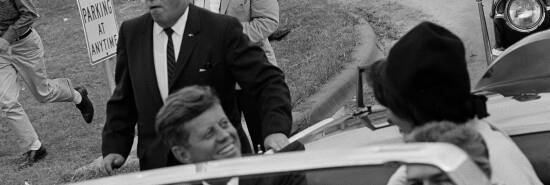60 years later, are JFK assassination conspiracy theories too good to be true?

My ancient cassette tape player rolls, and there is the voice from 30 years ago of a man from Oklahoma, confidently describing the grim history he witnessed up close.
And then he tells a lie. Or does he? The answer is relevant to a long-established tendency. And to a recent claim masquerading as significant.
BIDEN MIGHT BE DEMOCRATS’ BIGGEST PROBLEM CONVINCING BLACK AND LATINO VOTERS NOT TO SUPPORT TRUMP
Floyd Riebe, assistant to the photographer of the autopsy of President John F. Kennedy, is on my pre-digital recorder revealing details that, by the mid-‘90s, focused the attention of many assassination researchers. What did the president’s wounds look like? Did they resemble their description in the official record? In 1993 I was a Florida newspaper reporter enthralled by the JFK assassination narrative.
All of this matters as the 60th anniversary of the assassination has once again drawn out a klatch of hustlers and conspiracy dead-enders, offering to a deeply credulous media more silliness dressed up as real evidence or legitimate areas of inquiry. Even Rob Reiner and Alec Baldwin are joining in.
The big news throughout the fall has been the ongoing and vast PR campaign pushing JFK Secret Service team member Paul Landis’ new book, The Final Witness. Boosted by enormous pieces in Vanity Fair and the New York Times, the Landis book claims that as Kennedy was taken into the hospital in Dallas, Landis — and only Landis — happened to spy a bullet resting on the ledge of the upholstered back seat of the JFK limo. Then Landis plucked the bullet, dropped it into his pocket, strode into the hospital, and deposited it covertly on the president’s stretcher, for some reason, while the president was still on it. Landis then slipped out of the treatment room, which no one saw him enter. Then never went public. For 60 years.
Author and JFK researcher Fred Litwin has raised so many issues with the Landis book that it is difficult to choose just one. Litwin points out Landis added small details to his story over the years, but there is no record that Landis volunteered any of this to his Secret Service supervisors or to the Warren Commission, which did not interview him.
Landis would not be the first witness throughout the JFK assassination case to add details years later. Paul O’Connor, a medical technologist during the autopsy, whom I interviewed in his Florida living room in 1993, claimed in the 1970s that when the president’s coffin was open at Bethesda, the president’s body was in a body bag. When it was absolutely not placed in any body bag in Dallas. O’Connor repeated this debunked claim to me.
Jean Hill, who stood 20 feet from the president in a red coat as he was shot, added numerous details decades later she had not told the police or the Warren Commission. Including claims of an additional shooter across the street from her as the limousine passed. She wrote a book as well.
Which brings us back to my 1993 interview with Floyd Riebe, the autopsy medical photographer’s assistant (who was not interviewed by the Warren Commission). In reply to my asking him about what type of cameras were used that night, he points out that in addition to using large format cameras, “I did five rolls of 36 [frames], 35 mm. They aren’t in the archives.”
Fast forward to 1997, when Riebe, for the first time, participated in a formal deposition with a government investigative body, the Assassination Records Review Board. There was one major difference between that deposition and Riebe’s interview with me four years previously: The 1997 deposition was under oath.
It’s quite a read. His questioner asks: “You said previously that you took 35-millimeter photos. Approximately how many rolls of film did you take?”
Riebe replies: “Just part of one roll. I think it was only six or seven exposures.”
His claim to me of four or five rolls of 35-millimeter film had morphed into one roll.
It gets better. His deposition continues:
Q: Was that film in black and white or color?
A: I don’t remember.
Q: What was done with — when you had finished with that one roll of 35 mm film, what did you do with that?
A: I took it out of the camera and gave it to one of the secret agents there.
Q: Did you ever see that film subsequently?
A: No.
Q: Have you ever told any researchers that you took four or five rolls of film?
A: No.
CLICK HERE TO READ MORE FROM THE WASHINGTON EXAMINER
No? One story to a reporter, another under oath. Claims of clandestine body tampering. A second assassin remembered decades later. Paul Landis joins quite a club.
Craig Colgan is a writer based in Washington, D.C.
Tags: JFK Assassination, JFK, Conspiracy Theories, Opinion, Op-Eds
Original Author: Craig Colgan
Original Location: 60 years later, are JFK assassination conspiracy theories too good to be true?


